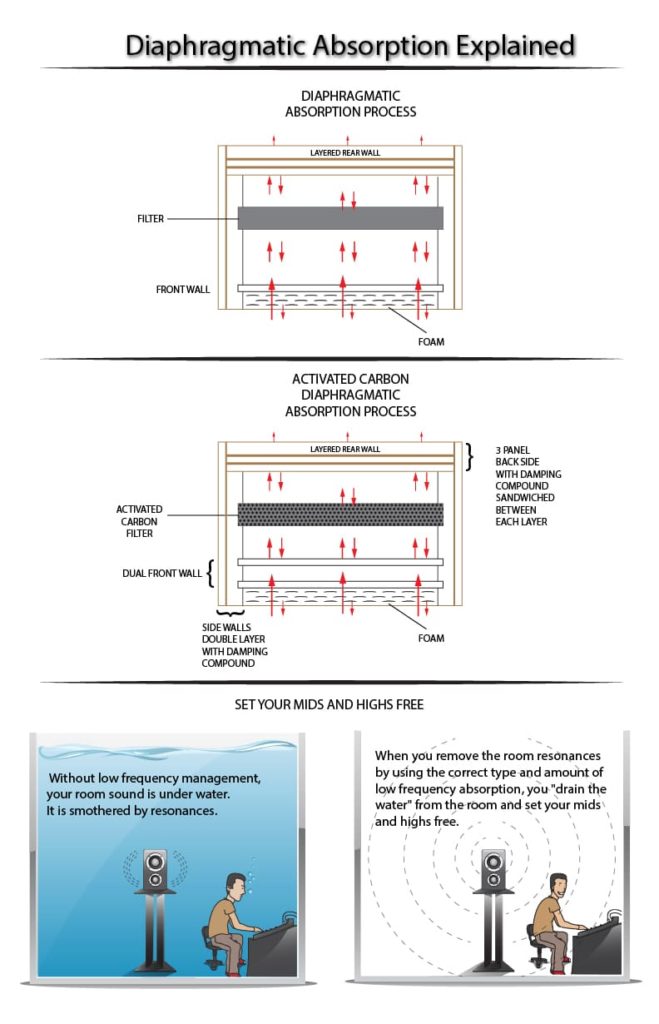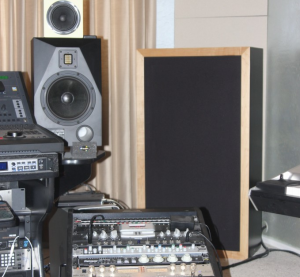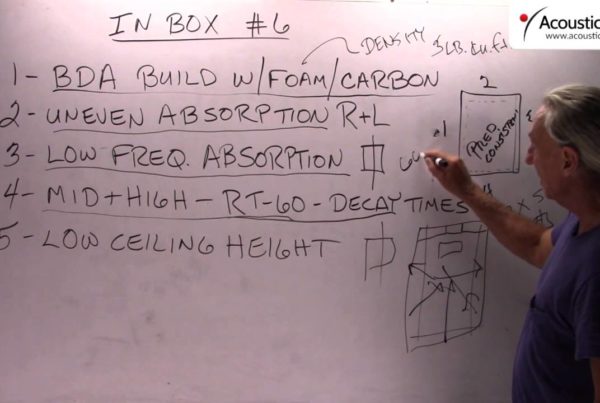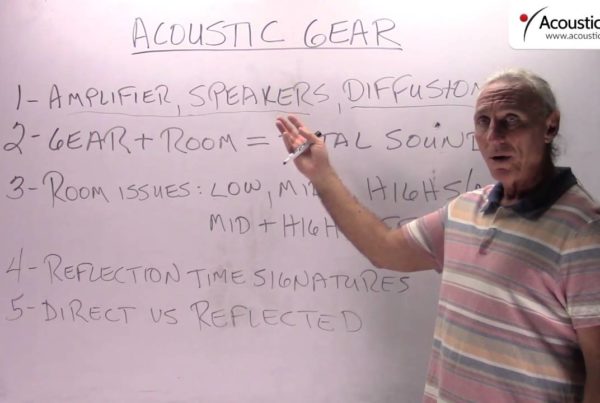The following graphic broadly explains how both a Diaphragmatic Absorber & Diaphragmatic Absorption work and why it’s so important that you find a solution for your recording studio and listening room.

Why a Diaphragmatic Absorber is a glorious thing
When sound energy strikes the front walls they vibrate or move in sympathy with each other to slow the lower frequency energy wave down that is striking it. Diaphragmatic absorbers love to be close to the sound pressure. After the speed of the wave is reduced, it enters the cabinet. This is not just any cabinet however. It is built like a hi end speaker cabinet. It has 7 layers of materials with vibrational damping structures between each layer. Trust me when I say that this 225 lb. cabinet does not move. The only thing moving is the front two walls, which is exactly the design goal.
Once the energy enters the cabinet, it strikes the charcoal or activated carbon. There is 65 lbs. of it suspended, at the correct cabinet depth, to achieve rates and levels of absorption never before achieved in a commercially available product. The Q value inside with the carbon, coupled with the inert cabinet design, produces absorption rates from 30 Hz. – 200 Hz. in 12″ – 14″ of space.
Here is Riverbank Labs independent test data on our Diaphragmatic absorber product series:
https://www.acousticfields.com/wp-content/uploads/2012/01/ACDA-12.pdf
We put $2 million plus into research for our solution and have built a series of products which finally deal with a problem most other manufacturers simply put a sticking plaster over, at best, or at worst ignore and try to change the definition of the solution! Check out the performance of the ACDA 10 and ACDA 12.
Now whilst those bad boys may be out of the price range of some of our home studio friends we have actually designed and built some step by step DIY plans so you can build your own Diaphragmatic absorbers at home! The BDA plan is a diaphragmatic absorber, minus the cabinet design and charcoal, and it will:
- Significantly reduce bass boom issues in small rooms
- Greatly enhance the sound of your recorded vocals and live instruments with absorption rates and levels specifically designed for vocals
- Totally change the way you hear playback at your listening or monitoring position
- Cost far less and prove far better than ineffectual alternatives
- Look great in your room
Click on the link below to start greatly improving your studio sound now:
www.acousticfields.com/shop/






